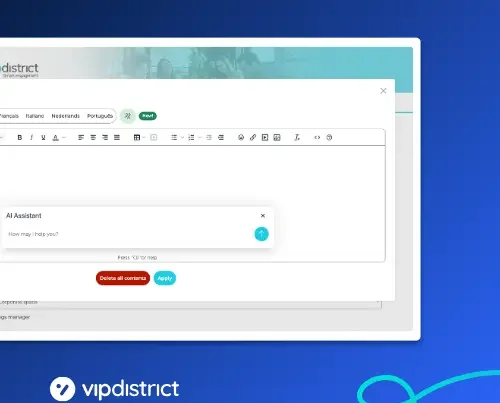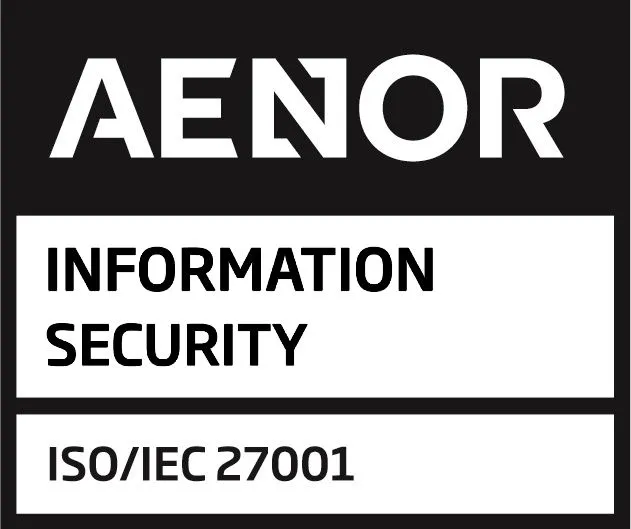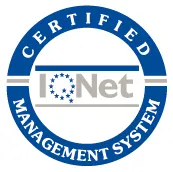
In today’s business environment, adapting and effectively managing change is critical to success. In this article we explain what change management is and why it is important. In addition, we will provide you with 7 essential keys to help your company in its implementation.
Table of Contents
What is enterprise change management?
Business change management is a methodology to prepare and support evolving businesses. That is, those that are moving towards a new way of working. It is a systematic approach involving assessment, resource planning and action implementation. That is, all the many details needed to facilitate a smooth transition.
Change management is based on a fact. Companies are made up of people and people need a suitable system in order to be able to adapt to new developments and realities. This involves the need to identify the factors driving the change.The reasons and benefits of this change must also be effectively communicated. In turn, the process must then provide the necessary support to help employees assimilate the changes in both their work duties and their work environment.
A strategic ally…
Adaptation
Business change management is a first-class ally for the success of your company. It enables you to address the challenges of an ever-changing business environment effectively. Agile adaptation is essential to maintain the company’s relevance and competitiveness. In a constantly evolving market, organisations must be able to anticipate and respond quickly to change. From customer preferences to emerging technologies or new economic conditions, to name but a few examples. Change management provides companies with the necessary strategies to remain competitive in the marketplace.
Reducing resistance
In addition, change management helps reduce resistance within the organisation. When significant changes are implemented, it is natural for some employees to show resistance or fear of the unknown. As leaders, it is critical to address these concerns proactively and empathetically. Effective communication and the active participation of employees in the change process are essential. Both to reduce resistance and to promote a receptive mentality.
Improved performance
Another important aspect of change management is its impact on business performance. Effective business change management ensures a smooth transition, optimises internal processes and fosters innovation. Change management can be used by the company’s HR department to align the company’s objectives. This helps create a clear and consistent approach throughout the organisation. For example, a company is seeking to improve its operational efficiency by implementing new technologies. To do this, the company must ensure employees are adequately trained to adopt these technologies effectively. This will lead to a significant improvement in the company’s performance.
Effective change management is essential for all companies and is especially necessary for meeting the challenges of an ever-changing work environment. Adaptation, reduced resistance, and improved performance are fundamental in this journey towards success.

7 keys to implementing effective change management in your company
1. Establish a solid project structure
Before embarking on any change process within the company, it is essential to first establish its structure. This must be clear and solid. In other words: set specific goals and objectives towards which the change is directed. Next, realistic deadlines for implementation must be determined. Leaders, teams and those responsible for the process in each area must also be designated. This structure will provide clear guidance for all involved and help maintain focus on the desired outcomes.
2. Design a detailed plan
Once the project structure has been established, it is important to design a detailed plan. One that allows the change process to be carried out in an orderly and effective manner. The plan should divide the necessary transformations into phases. This will facilitate implementation and allow progress to be measured at each stage. In addition, the plan should include strategies and obstacles in order to be ready to address any potential challenges that may arise.
3. Provide all necessary resources
Change management requires more than just planning. In order to guarantee successful restructuring all the necessary resources must be provided.This includes securing the right tools and technologies for it to be carried out effectively. Likewise, sufficient time allowance and adequate financial resources must be allocated to ensure the process runs smoothly.
4. Ongoing communication
Communication is critical throughout the change process. Employees must be kept up to date on the progress of the project. They must have also been previously told the reasons for the change and how it will affect both the company and them individually. Continuous feedback is essential to align expectations and maintain employee motivation. For this it is important to hold regular meetings and dispose of effective communication channels. According to a study, one in five failures in the implementation of a business change is a result of poor communication.
This is where Vip Connect, Vip District’s communication and collaboration platform, stands out. This product provides a centralised space for sharing change-related content. Vip Connect can be used to disseminate transformation updates, provide training resources and share success stories. Keeping employees informed and feeling part of the process. An important aspect of Vip Connect is that it can be used to organise discussion groups and thematic forums. Employees are in this way provided with a space where they can ask questions and share their experiences.
Want to design effective employee surveys? Find out how Vip Connect can help you customise them and optimise your employees’ experience.
5. Celebrate every achievement
Recognising and celebrating achievements during the change process motivates employees and strengthens commitment and engagement. Each milestone achieved should be recognised and rewarded in one way or another, be it individually or collectively. Providing training opportunities for employees will also help them feel valued and prepared to face new challenges.
An excellent solution for reinforcing and recognising the desired behaviours during the change process is Vip Awards. This tool can be used to spotlight and reward employees. Both for those who are quick to adapt and for those who collaborate effectively. Recognition can be public or private. By recognising and reinforcing positive behaviours, a supportive work environment is created. And this translates into a drive and enthusiasm to adopt the new culture and processes.

6. Review and adjust the plan
Change management is a dynamic and constantly evolving process. Being open to feedback and learning from experiences during change implementation is essential. If challenges or changes in the business environment arise, it is emperative to be able to adjust the plan quickly. This ensures that the process remains effective and leads to the desired results. Flexibility and adaptability are key to successful change management.
7. Promote a culture of change and learning
For change management to be successful, an organisational culture must be created and nurtured. Not just any culture obviously, but one that promotes adaptability, innovation and continuous learning. This implies involving all members at all levels of the company in the change process. in addition to encouraging employees to be open to new ideas and approaches.
An effective strategy to encourage the adoption of the new culture is through the use of Vip Incentives campaigns. These campaigns allowclear goals to be set and employees who demonstrate outstanding commitment to change to be rewarded. For example, specific objectives can be set or demonstration of behaviours aligned with the new culture can be established. Moreover, incentivising is key. The same can be said for bonuses, points to be exchanged for gifts or additional benefits. All of this reinforces the importance of these new behaviours and attitudes.
Change management is a fundamental aspect for any company and for any leader. A leader must be able to manage change within their team. Some of the 5 ideas proposed by Jim Hemerling in this TED talk are worth thinking about. Be sure to take a look!
By following these steps, companies face the challenges of change more effectively and obtaining better results. And remember, business change management is not just about implementing change, it is about involving people.
Contact us, let us be the key to your change management.








